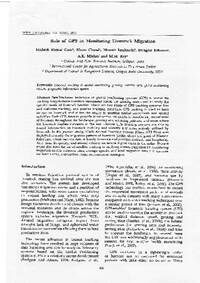Role of GPS in monitoring livestock migration

Authors:
Satellite-based technique of global positioning systems (GPS) is useful for tracking long-distance livestock movement across the grazing routes md to study the specific needs of livestock herders. There are two kinds of GPS tracking systems: live md real-time tracking, and passive tracking. Real-time GPS tracking is used to keep an eye on livestock and it has the ability to monitor spatial movements and spatial activities. Such GPS devices provide information for multiple benefits i.e, movements of livestock throughout the landscape, grazing and watering patterns, and areas where the livestock deplete nutrients in the soil. Passive GPS tracking systems are able to record information on livestock mobility md identify key areas activity utilized by livestock- In the present study, Clark Animal Tracking System (Clark ATS plus) was deployed to study the migration pattern of livestock (cattle, sheep and goat) of Western Rajasthan, which records data at hourly intervals and position (latitude md longitude), date, time, fix quality, and animal velocity on secure digital cads in the collar. Present paper discusses the use of satellite tracking in studying animal migration by elucidating migration routes, stopover sites, average speeds, and total migration time and distance for formulating appropriate range management strategies.
